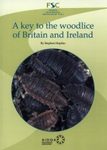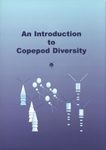![Oar Feet and Opal Teeth Oar Feet and Opal Teeth]()
Click to have a closer look
About this book
Contents
Customer reviews
Biography
Related titles
About this book
Oar Feet and Opal Teeth is about free-living copepods and the copepodologists who study them. Copepods are a subclass of the arthropod class Crustacea. They act as dominant herbivores and small predators in the planktonic ecosystems of oceans, estuaries, and lakes. Copepods are likely the largest assemblage of complex animals on earth. These strikingly beautiful small crustaceans are of wide ecological significance and as complex and precisely adapted as insects. Yet few biologists and others interested in animals are familiar with them. In Oar Feet and Opal Teeth, Charles B. Miller introduces these small crustaceans and the scientists devoting their careers to revealing their biology.
In twenty-one chapters, Miller details the defining features and general biology of copepods. They typically have four or five pairs of oar-like feet to drive escape jumps. Teeth on mandible extensions are formed with siliceous minerals akin to opal. The first two chapters of the book closely examine the oar feet and mouthparts. Subsequent chapters describe internal anatomy, taxonomy, and many aspects of copepod natural history. Recent evolutionary insights about them are reviewed; those are based on molecular genetics and reach back to the Cambrian explosion.
Oar Feet and Opal Teeth includes over twenty biographical sketches of copepodologists from the mid-twentieth century to the present. Among them, Russell Hopcroft, a premier photographer of plankton, has full-colour copepod images featured throughout the book. Jeannette Yen learned how Euchaeta marina detects prey and studies how ready-for-mating copepods find each other. Shinichi Uye of Hiroshima University studied the production by copepods of resting eggs and their delayed development. Grace Wyngaard is studying the special embryonic cell divisions of some lake copepods for eliminating "junk DNA". Miller based most of the profiles featured in the book on personal interviews he conducted.
Contents
Preface
Chapter 1. Planktonic Copepods Have Those Oar Feet
Biographical Sketch: Russ Hopcroft
Chapter 2. The Front End: Sensory Systems, Feeding Limbs, Opal Teeth
Biographical Sketch: Barbara Sullivan
Chapter 3. Let's Go Inside
Biographical Sketches: Esther Lowe and Tai Soo Park
Chapter 4. Alpha Taxonomy I
Biographical Sketch: Bruce Frost
Chapter 5. Alpha Taxonomy II
Biographical Sketches: Janet Bradford-Grieve and Taisoo Park (again)
Chapter 6. Feeding I: Various Modes
Biographical Sketch: Jeannette Yen
Chapter 7. Feeding II: More about Eating
Biographical Sketch: Rudi Stricker
Chapter 8. Not Being Eaten I: Diel Vertical Migration
Biographical Sketches: Mark Ohman and Steve Bollens
Chapter 9. Not Being Eaten II: More Strategies
Chapter 10. Meeting and Mating: Sex in Wide-Open Water
Biographical Sketches: Atsushi Tsuda and Jeanette Yen (again)
Chapter 11. Reproduction, Free vs. Sac-Spawners
Biographical Sketches: Jeffery Runge, Barbara Niehoff, Thomas Kiørboe, and Marina Sabatini
Chapter 12. Development
Biographical Sketch: Catherine Johnson
Chapter 13. Sex Determination in Copepods
Biographical Sketches: Roger Harris, Xabier Irigoien, and Tran The Do
Chapter 14. Chromatin Diminution: Marvelous Mitoses
Biographical Sketch: Grace Wyngaard
Chapter 15. Copepodite Diapause: Atlantic
Biographical Sketches: Sheina Marshall, A.P. Orr, Mark Baumgartner, and Ann Tarrant
Chapter 16. Copepodite Diapause: Pacific and Indian
Biographical Sketch: Sharon Smith
Chapter 17. Egg Diapause
Biographical Sketches: Edward Zillioux and J. Kenneth Johnson
Chapter 18. Molecular Genetics Applied to Copepods
Biographical Sketch: Ann Bucklin
Chapter 19. Beta Taxonomy I: Copepod Sprigs on the Tree of Life
Biographical Sketches: Abraham Fleminger and Erica Goetze
Chapter 20. Beta Taxonomy II: Copepods in the Stream of Time
Biographical Sketches: Geoffrey Boxshall and Rony Huys
Chapter 21. Copepod Phylogenies from Mitochondrial DNA Sequences
Biographical Sketch: Diego Figueroa
Index
Customer Reviews (1)
-
A journey into the hiden world of plankton
By
Roger
10 Feb 2024
Written for Hardback
This is a unique and landmark book. Copepods are important, playing a key role in the global carbon cycle and in marine food chains supporting the world’s fisheries. Professor Miller does a wonderful job in combining detailed science with insights into the lives of the scientists making the discoveries. This combination of hard science with the personal makes the book unique. It will be recommended reading for University Marine Biology and Biological Oceanography courses for decades to come. Highly recommended.
1 of 1 found this helpful
-
Was this helpful to you? Yes No
Biography
Charles B. Miller is a Professor Emeritus of Oceanography in the College of Earth, Ocean, and Atmospheric Sciences at Oregon State University. He co-authored Biological Oceanography with Patricia Wheeler (in its second edition as of 2012). Professor Miller is a member of the Association for the Sciences of Limnology and Oceanography.















![The Encyclopedia of the Swedish Flora and Fauna, Kräftdjur: Krill – Tiofotade Kräftdjur [Swedish]](http://mediacdn.nhbs.com/jackets/jackets_resizer_medium/26/268174.jpg?height=150&width=118)



![Les Crustacés Décapodes des Petites Antilles: Avec de Nouvelles Observations pour Saint-Martin, la Guadeloupe et la Martinique [The Crustacean Decapods of the Lesser Antilles: With New Observations for Saint-Martin, Guadeloupe and Martinique]](http://mediacdn.nhbs.com/jackets/jackets_resizer_medium/24/245203.jpg?height=150&width=106)














